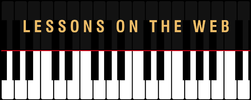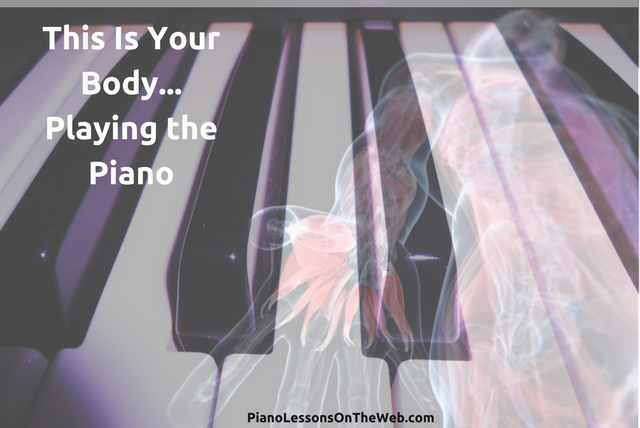|
Do you ever feel physically tired after you've practiced or performed on your piano? We musicians are often aware of the mental exhaustion that follows a long time of playing, but how much attention do we pay to our bodies and what it is showing us about our piano playing? We participate physically with our piano playing just like a swimmer or runner does with their specific sport or talent. We are in fact, athletes. Let's look at the different parts of our bodies that are engaged when we play the piano. The obvious ones... We're already pretty aware that we use our fingers, hands, wrists and arms when we play the piano. Most of the exercises that we play have to do with training our fingers where to go on the keyboard for which note(s) we need to play, how to cross over our fingers to play our scales, and how to move our arms and hands over the keyboard while our fingers are moving. Perhaps a little less obvious especially in the beginning is that we also use our feet to play the foot pedals ( there are 3 of them) when we move into more advanced music. We may use one or both of our feet on the foot pedals at any given time. However, there are less obvious parts of our bodies that we use as well; such as... We utilize most of our neck, shoulder and upper back muscles, tendons and ligaments when we play the piano. Think about how you look down at the keyboard, look back up at the music, glance to the right or the left to check your fingerings, etc. Try that now at your keyboard and notice just how much you feel different areas in this part of your body move with you as you play. Now let's move back down to our feet and we're going to pay attention to how our legs participate in our piano playing. Sit at your keyboard and put both feet flat on the ground. As you move forward to put your hands on the piano keyboard, do you notice that your feet and especially your legs push a little bit against the floor as you move towards your piano? You may feel more tension/pressure in your feet than you do in your legs. This is important and we'll discuss this more in the next blog. Last but not least, we're going to back up a bit, and pay attention to...our backs! Instead of back though, we're going to focus more on our spine and tailbone, and notice what is happening in this area when we play. Does your spine tend to roll forward and slump a bit when you play? What we do with our spine while we play the piano has a direct effect on the next part of the body that is engaged when we play the piano: our core. Our cores are located in our bellies. This is the source of our physical and emotional strength in some ways. A strong core means that we're presenting and acting from a place of security, strength, confidence and positiveness. Each of us engages our core whenever we do any physical action. The degree that we engage it is what is important and recognizing how we do that is the best place to start. As you can see, we use basically every part of our body when we play the piano...it's really remarkable! Once we realize how much physical involvement is required to really play the piano well, we understand how important it is to take care of ourselves physically, stay in shape, strengthen our core and upper body muscles, and get plenty of good nutrition and sleep. Awareness of our body's role in our piano playing is the beginning of becoming a better piano player! In our next blog we're going to look at how pain, tension, and even injury can teach us a lot about how we're playing and what we can do to change overcome blocks in our growth. Changing how we engage physically with our piano playing will change our piano playing. So... Stay Tuned to PianoLessonsOnTheWeb.com to learn much more and achieve your dream of playing the piano! Leave a Reply. |
AuthorMost blogs written by Archives
June 2020
Categories
All
|


 RSS Feed
RSS Feed